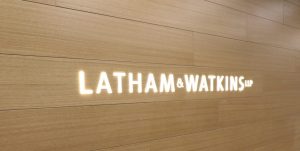Kenya Airways has undergone a complex and contentious USD 2 billion financial restructuring; the intricate deal saw through a variety of things, such as: re-profiling of payments owned to various lenders; a debt-for-equity swap and the agreement of a new financial facility from Kenyan banks, which thus placed the airline largely in shared ownership between Kenya’s government, owning 48.9% and a consortium of 11 Kenyan commercial banks owning 38.1%
This is one of Kenya’s largest ever debt and equity restructuring.
Interview with Andrew Mugambi, Partner at HM&M
What unique challenges did this restructuring present and how did you overcome them?
We were retained to act for ten of the local banks who had advanced money to KQ. However, some of the banks we were representing were not comfortable with the terms of the restructuring proposed by KQ and this created some complexity in the representation of the ten banks. We managed this by holding numerous rounds of all-party meetings to ensure that our clients understood the terms of the proposed restructuring and to take on board any matters that required further negotiation with KQ. Our approach was to ensure that there was full participation by all clients and that the positions agreed upon were in the best interests of all the banks.
The matter became litigious with three of the banks filing applications in court to stop the proposed restructuring. The remaining banks, who at the time were largely in support of the process, worked with our litigation team to represent them in the applications which ensured that the banks in support of the process were able to articulate their positions during the court hearings.
Throughout the negotiations we had to ensure that the interests of the local banks were secured amidst competing interests from other KQ creditors within the proposed structure. Considering that there were legal and financial aspects to the restructuring, we worked closely with PwC, the banks’ financial advisers, to ensure that the banks got the best possible and legally implementable deal.
There were several documents to be drafted and reviewed and this had to be done within strict timelines. We also had to manage comments and proposals from all the ten local banks when negotiating the documents. The depth of talent within the Firm was critical to the success of the project, as we were able to assemble a large enough team consisting of both partners and associates, each with clear roles and reporting lines, to deal with the different facets of the transaction. Our litigation team led by Kenneth Fraser, SC, was also able to work effectively through extremely tight schedules set by the courts to prepare for the various hearings.
How did you ensure due diligence was effectively done for this?
From the time of our appointment to the close of the transaction we conducted comprehensive research on all legal and regulatory aspects of the restructuring and prepared briefs for our clients. We continuously interrogated the proposed structure and discussed with the banks to ensure that it was implementable. We also worked closely with PwC who advised on the financial aspects including KQ’s proposed turnaround business plan.
How did you ensure all the law firms were on the ‘same page’ when dealing with the logistics of this deal?
We held regular meetings and conference calls with the other lawyers for status updates on pending action points. After the meetings, open issues would be reported to our respective clients for consideration and further instructions.




















